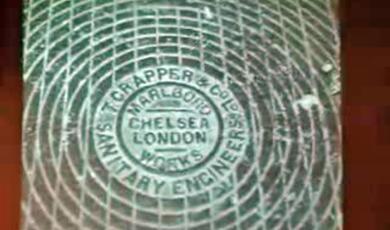Diabetes, Hypertension and Vascular Diseases of the Eye
Share
- Details
- Text
- Audio
- Downloads
- Extra Reading
The transparent tissues of the eye allow light to reach the retina. This highly metabolic tissue requires oxygen delivered by the blood vessels, which are damaged by disease. Diabetic retinopathy is the commonest cause of blindness in the working-age population and in later life hypertension adds to this toll. The eyes maybe the mirror of the soul, but they certainly are a window into our general health. This lecture traces the story from the development of the ophthalmoscope to modern treatments.
Download Text
Gresham Lecture, Wednesday 8 December 2010
Hypertension Diabetes and vascular diseases of the eye
Professor William Ayliffe
Discovery of the circulatory system.
The body is maintained by an elegant scheme of channels which carry oxygen to the tissues and carry waste away. This system is the vasculature. Vital for survival, it is obvious that losing all the blood quickly from major injury leads to death. Less obvious is the damage caused by chronic disease secondary to high blood pressure (systemic hypertension) or diabetes. These eventually cause significant morbidity and even death. They are called the silent killers because often symptoms are absent or overlooked. Indeed vascular disease is the number one cause of death in the Western World.
There are also less common conditions, from infection to auto-immunity that may impair the vasculature. These tend to affect the younger age group and must be considered in patients with unusual conditions.
Despite the knowledge that injuries cause loss of blood, it was not appreciated that the blood circulates in a closed system like a figure of 8 with one loop oxygenating the blood in the lungs and the second loop distributing this blood to the body.
After death the arteries have with their last contraction pumped out their blood and so appear empty on post-mortem examination. In contrast the non-contractile veins contain large amounts of clotted blood. Galen of Pergamon therefore proposed that the veins contained blood made by the liver. Ebbing to and fro blood was thought to be consumed by the organs of the body. The heart sucked blood into its ventricles and hypothetical pores allowed passage between the ventricles. The ‘empty” arteries were though to carry a vital spirit made by the heart. No further advance was made until the middle ages
Ibn al-Nafis trained in Damascus and became a physician in the uncertain times of War. He moved to Cairo in 1236 and became famous. Invasion by the Mongols destroyed Baghdad and this disaster was a stimulus to Muslim academics to collate all the information in large encyclopaedias. One of these by al Nafis contains the first description of the passage of blood to the lungs.
Unfortunately, soon afterwards this amazing discovery was forgotten.
William Harvey, physician to St. Bartholomew’s Hospital had trained in Padua and may have come across Muslim texts in translation but the printed version of al-Nafis’ commentary, published in Venice 1547, omitted the pulmonary circulation. In a lecture 16th April 1616, he addressed the College of Physicians in Knightdale Street, nr St. Paul’s and explained that blood was not consumed with each beat of the heart but re-circulated in the closed system we recognize today. This was published as De Motu Cordis in 1628.
One problem of this theory was that blood had to get from the arterial system into the veins. It was hypothesized that tiny invisible channels were present to perform this function.
The discovery of these channels required magnification. Following the invention of the microscope, probably in Holland by Zaccharias Jansseen in 1595; its use was overlooked in the shadow of its optical cousin, the telescope. It took 50 years before any major scientific discoveries were communicated with the new instrument. Major findings by Robert Hooke were drawn in his beautiful book Micrographia, published in 1665.
More detailed descriptions using home made more powerful equipment by the Dutch Draper Antonie Van Leeuwenhoek in 1673. Communicated to the Royal Society in London, amazingly some of his original samples still survive.
It fell to Marcelo Malpighi, born the year of Harvey’s 1628, De Motu Cordis, to finally identify the connections between the arteries and veins. These capillaries were first seen under a microscope whilst examining frogs lungs.
Hypertension
The first person to measure blood pressure in a living subject was Stephen Hales in 1727, Parson of Teddington. The method involved cutting open and canulating a large artery so was clearly impractical for clinical use.
In 1855 Karl von-Vierordt in Tubingen worked out that one could measure the pressure in blood vessels indirectly by measuring the pressure needed to close off arterial pulsation. Riva Rocci in Turin invented the prototype of the modern sphygmomanometer and Korotkoff in Moscow introduced the stethoscope to listen to the pulse and accurately estimate the systolic and diastolic blood pressure.
High blood pressure affects a billion people worldwide and is a major cause of myocardial infarction, stroke, renal disease and sight-threatening complications in the eye blood vessels.
Acute severe hypertension in young people causes hypertensive retinopathy.
This is a rare occurrence but the eye signs can be diagnostic and resolve if treatment is instituted rapidly. Untreated this condition is fatal.
Hypertensive retinopathy.
More common are the effects of chronic hypertension which damages the blood vessel walls and leads to strokes from fragments of plaques in blood vessels breaking off and being swept into smaller vessels where they block the flow In the eye these strokes are seen as retinal arteriolar occlusions. Damage to vessel walls predisposes to thrombosis and in the eye this causes retinal vein occlusions.
Retinal arteriolar occlusion (arrowed) Retinal Vein occlusion Diabetes Mellitus Aretaeus the Cappodacian (81-138AD). Contemporary of Galen, described a disease of constant thirst (polydipsia), excessive urination (polyuria) and loss of weight. He called this Diabetes (διαβαίνειν) meaning to stand legs apart or a siphon Thomas Willis found the urine of these patients tasted sweet and added the word ”mellitus” (honey). Two main types of this disease occur. One affects younger patients and is insulin dependent. A second type is caused by insulin resistance and tends to affect older people with a large body mass index, The term diabesity has been used to to describe the overall complex metabolic features of these patients. With increasing adoption of Western diet, younger people are being diagnosed with increasing frequency. The pancreas is an organ that releases digestive enzymes. However removing the pancreas of an animal leads to diabetes and death. Ligating the ducts from the gland causes digestive disturbance but not death, implying that there is a second mysterious substance that is needed for metabolic control. Lack of this substance is the cause of diabetes. Banting and Best in 1921 found that sterile extracts from the ligated pancreas of a dog could prevent lethal diabetes in other dogs who had had their pancreases removed Soon insulin was made in commercial quantities and saved the lives of young patients awaiting inevitable death on the large diabetic wards in Toronto. Long-term diabetes
Part of:
This event was on Wed, 08 Dec 2010
Support Gresham
Gresham College has offered an outstanding education to the public free of charge for over 400 years. Today, Gresham College plays an important role in fostering a love of learning and a greater understanding of ourselves and the world around us. Your donation will help to widen our reach and to broaden our audience, allowing more people to benefit from a high-quality education from some of the brightest minds.


 Login
Login







